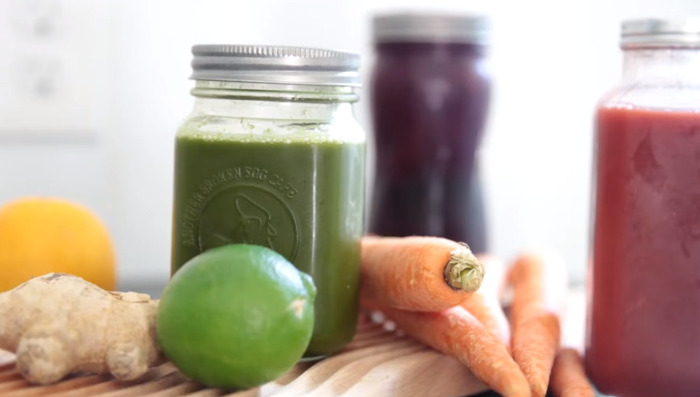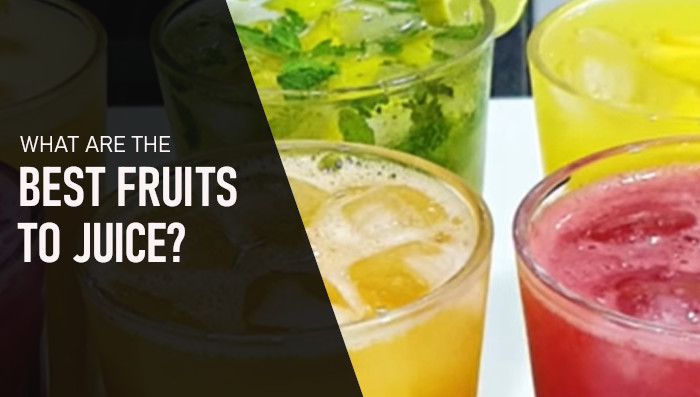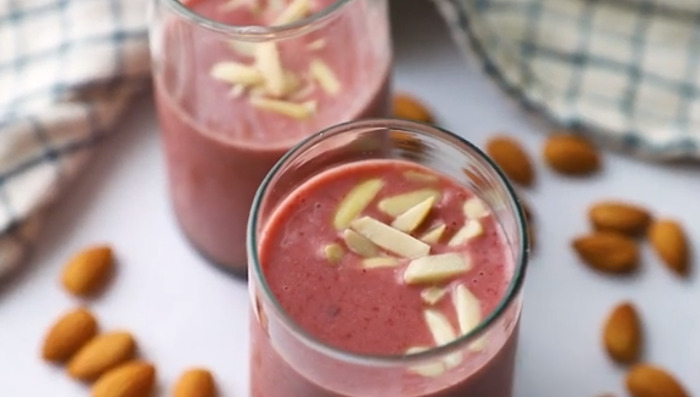Cancer, in simple terms, is when the body’s cells start to grow uncontrollably. Instead of following their usual life cycle of growing, functioning, and then dying, these rogue cells multiply without check. This abnormal growth can lead to tumors, which might be benign or malignant. The malignant ones are what we commonly refer to as cancerous. They can invade nearby tissues and spread to other parts of the body.
Now, what causes these cells to act this way? Factors like environmental toxins and poor diet play a significant role. For instance, cruciferous vegetables, rich in bioactive compounds, have shown a preventive role against cancer. On the other hand, pomegranate extracts have been found to inhibit the growth of certain cancer cells. It’s essential to understand that while our body produces cancer cells daily, a robust immune system usually fights them off. But when this system weakens, cancer can gain a foothold.
To combat this, many turn to natural remedies like juicing. Fresh juice, especially from vegetables like carrots and greens, can be a potent weapon against cancer. They’re packed with nutrients that not only detoxify our body but also strengthen our immune system. So, while cancer might sound daunting, understanding its nature and the tools at our disposal can make a difference.
4 Bests juice Recipes for fighting against cancer:
1.Pomegranate Blend:
Ingredients:
- Pomegranates: 2 large ones, de-seeded. These are the stars of our juice, packed with antioxidants and known for their anti-inflammatory properties.
- Red Cabbage: 1/4 medium-sized. Not just for color! Red cabbage brings in anthocyanins, powerful antioxidants with anti-carcinogenic effects.
- Blueberries: 1.5 cups. These little berries are nutrient-dense, adding a sweet touch and enhancing the juice’s health benefits.
- Water: Optional. If you prefer a thinner consistency, add as needed.
- Ice: Optional. For those who like their juice chilled, toss in a few cubes.

Instructions:
- Preparation: Begin by washing all your ingredients. This ensures you’re using clean, dirt-free produce.
- De-seeding: Take the pomegranates and de-seed them. This might take a bit, but it’s worth the effort for a smooth juice.
- Chopping: Slice the red cabbage into smaller pieces. This helps in extracting juice more efficiently.
- Juicing: Start with the pomegranates, followed by the red cabbage, and finally the blueberries. If you’re using a juicer, feed them in. If you’re using a blender, blend until smooth and then strain.
- Consistency Check: If you find the juice too thick, you can add a bit of water to get your desired consistency.
- Serving: Pour the juice into a glass. If you prefer it cold, add some ice cubes.
- Enjoy: Drink immediately to enjoy the maximum benefits. Remember, fresh juice is best consumed right away to prevent nutrient loss.
2. Leafy Greens:
Ingredients:
- Kale: 2 cups, washed and roughly chopped. Kale is a powerhouse of nutrients, offering a burst of flavor and health benefits.
- Spinach: 1.5 cups, fresh and cleaned. Spinach provides a mild taste and is packed with iron.
- Celery: 2 stalks, cleaned and chopped. Celery adds a refreshing touch and is known for its hydrating properties.
- Cucumber: 1 medium-sized, peeled if non-organic. Cucumbers are great for hydration and give a cooling effect.
- Green Apple: 1, cored and sliced. Apples add a hint of sweetness and are rich in antioxidants.
- Lemon: Half, peeled. Lemon gives a zesty kick and aids in detoxification.
- Ginger: A thumb-sized piece, peeled. Ginger adds a spicy note and is excellent for digestion.
- Parsley: A handful, fresh. Parsley is not just a garnish; it’s rich in vitamins and gives a fresh taste to the juice.

Instructions:
- Preparation: Begin by washing all your ingredients thoroughly. This ensures you’re juicing clean, dirt-free produce.
- Kale & Spinach: Roughly chop the kale and spinach. This makes it easier for the juicer to process and extract maximum juice.
- Celery & Cucumber: Trim the ends of the celery and chop into smaller pieces. For the cucumber, if it’s non-organic, consider peeling it to avoid potential pesticides.
- Apple: Core and slice the apple. No need to peel, as the skin contains valuable nutrients.
- Lemon & Ginger: Peel both. While lemon zest is flavorful, in juicing, the peel can make the juice bitter. Ginger should be peeled to get the pure, spicy essence.
- Juicing: Start your juicer. Begin with the leafy greens, followed by the celery, cucumber, apple, lemon, and ginger. This order helps in pushing through the leafy greens, ensuring maximum juice extraction.
- Stir & Serve: Once juiced, give it a good stir to mix the flavors. Pour into a glass and enjoy immediately for the freshest taste and most nutrients.
- Clean Up: Always clean your juicer immediately after use. It makes the process easier and ensures your machine lasts longer.
3. Blueberry Blast:
Ingredients:
- Blueberries: 1.5 cups of fresh blueberries, ensuring they’re ripe and juicy. Blueberries are the star ingredient, offering a burst of flavor and a wealth of antioxidants.
- Spinach: 1 cup of fresh spinach, washed and roughly chopped. Spinach provides a subtle earthy flavor and is packed with essential nutrients.
- Apple: 1 medium-sized apple, cored and sliced. Apples add a touch of sweetness and are a great source of dietary fiber.
- Lemon: Juice from half a lemon. This adds a zesty kick and enhances the overall flavor.
- Ginger: A small knob, about ½ inch, peeled. Ginger gives a spicy undertone and is known for its digestive benefits.
- Chia Seeds: 1 tablespoon. These tiny seeds are a powerhouse of nutrients and give a slight crunch.
- Almond Milk: 1 cup, unsweetened. It provides a creamy base and is a dairy-free alternative.
- Ice: ½ cup, optional, for a chilled drink.
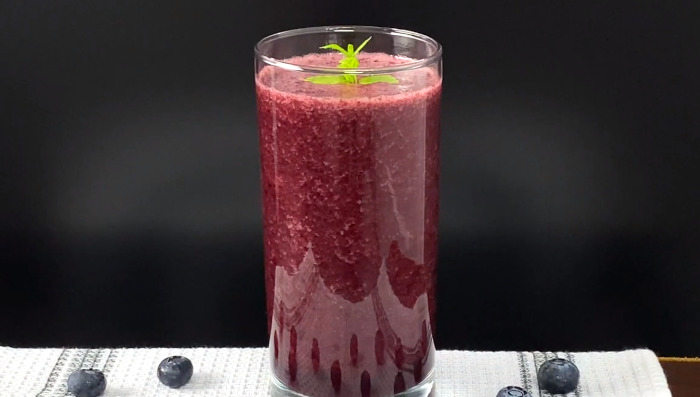
Instructions:
- Preparation: Begin by gathering all your ingredients. Ensure the blueberries are fresh and the spinach is washed.
- Blender Ready: Use a high-speed blender for the best consistency. Make sure it’s clean and ready to go.
- Blueberries First: Add the 1.5 cups of blueberries to the blender. They’re the main flavor, so they go in first.
- Spinach and Apple: Toss in 1 cup of chopped spinach and the slices of one medium apple.
- Zest and Spice: Squeeze in the juice from half a lemon and add the ½ inch piece of peeled ginger.
- Chia and Creaminess: Sprinkle in 1 tablespoon of chia seeds. Pour in 1 cup of unsweetened almond milk for that creamy texture.
- Blend: Start blending on a low setting, gradually increasing to high. Blend until smooth.
- Ice for Chill: If you prefer your drink cold, add ½ cup of ice and blend again briefly.
- Serve and Enjoy: Pour your Blueberry Blast into a glass. Enjoy the refreshing taste and the health kick it provides!
4.Orange Zest:
Ingredients:
- Oranges: 4-5 large, ripe, and juicy oranges. This should yield about 2 cups of juice.
- Water: Optional. If you prefer a milder taste, you can dilute with ½ cup of water.
- Sweetener: Optional. 1-2 teaspoons of honey or agave syrup if you like it a bit sweeter.
- Ice: Optional. ½ cup if you prefer your juice chilled.
- Lemon Zest: A pinch for an added zesty flavor.
- Mint Leaves: 2-3 leaves for garnish and a refreshing aftertaste.
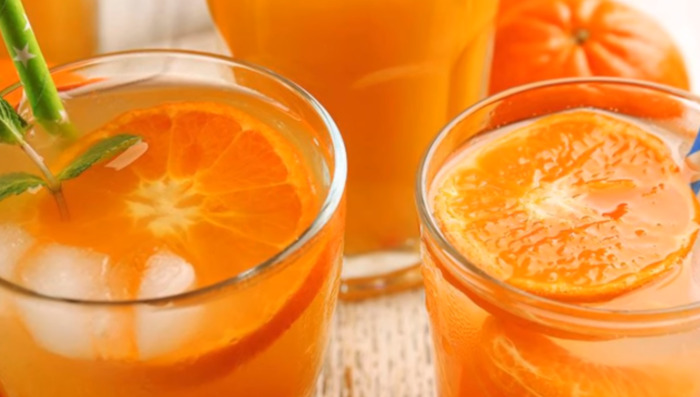
Instructions:
- Prepare the Oranges: Wash the oranges thoroughly under running water. This step is crucial, especially if you’re using the zest. If you prefer your juice cold, you can also refrigerate the oranges for a while.
- Cut and Squeeze: Cut each orange in half. Use a citrus juicer or a reamer to extract the juice from the oranges. Squeeze them firmly to get as much juice as possible. If you’re using a citrus juicer, follow the manufacturer’s instructions.
- Optional Dilution: If you find the juice too strong, you can dilute it with ½ cup of water. Add the water gradually and taste until you achieve your preferred flavor.
- Sweeten (Optional): If you like your orange juice a bit sweeter, you can add 1-2 teaspoons of honey or agave syrup. Stir well to combine. Remember, this step is entirely optional, as fresh orange juice is naturally sweet.
- Add Zest (Optional): For a zesty twist, you can sprinkle a pinch of lemon zest into the juice. The lemon zest adds a refreshing citrusy aroma to your orange juice.
- Chill and Serve: If you prefer your orange juice cold, add ½ cup of ice cubes to the freshly squeezed juice. Stir gently to chill. You can also garnish your glass with a couple of mint leaves for a refreshing touch.
Benefits of juicing for cancer:
Juicing can offer several potential benefits for individuals dealing with cancer. Here are some key advantages:
- Nutrient-Rich: Freshly prepared juices are packed with essential nutrients, including vitamins, minerals, and antioxidants. These nutrients can support the immune system, which is crucial for cancer patients.
- Hydration: Staying well-hydrated is essential during cancer treatment. Juices can help maintain hydration levels, especially for those who may find it challenging to drink plain water.
- Digestive Ease: Cancer treatments can sometimes lead to digestive issues. Juicing provides a gentle way to consume nutrients, making it easier on the digestive system.
- Increased Energy: Many cancer patients experience fatigue. The vitamins and minerals in juices can provide a natural energy boost, helping patients feel more vital and alert.
- Antioxidant Defense: Antioxidants in fruits and vegetables can help protect cells from damage caused by free radicals. This cellular protection is particularly valuable for cancer patients.
- Weight Maintenance: Maintaining a healthy weight is important for cancer patients. Juices can be a nutritious addition to a balanced diet, potentially aiding in weight management.
- Detoxification: While the liver and kidneys are responsible for detoxifying the body, some juicing enthusiasts believe that certain juices can support these organs in their functions.
- Improved Appetite: For some cancer patients, treatment can lead to a reduced appetite. Juices with appealing flavors can help stimulate the desire to eat.
- Customization: Juicing allows for customization based on individual preferences and dietary needs. Patients can tailor their juices to suit their taste and nutritional requirements.
- Hygienic Preparation: When prepared and consumed safely, juices can be a hygienic option, reducing the risk of foodborne illnesses during a vulnerable time.
The Bottom Line:
In conclusion, juicing can be a valuable addition to the diet of individuals facing the challenges of cancer. It offers a convenient and nutrient-rich way to support overall health during treatment. Freshly prepared juices, rich in vitamins, minerals, and antioxidants, can provide essential nourishment while being gentle on the digestive system. Moreover, they can help combat fatigue, maintain hydration, and stimulate the appetite.
The benefits of juicing extend beyond mere nutrition. It empowers individuals to take an active role in their well-being, allowing for personalization and customization to suit specific preferences and dietary requirements. However, it’s crucial to approach juicing as a complementary aspect of cancer care, in consultation with healthcare professionals.
Ultimately, juicing can offer a ray of positivity during a challenging time, promoting vitality and resilience. It should be embraced as part of a holistic approach to managing health and well-being while navigating the journey of cancer treatment.
FAQs:
Is Juicing good for Chemo patients?
Absolutely, juicing can be beneficial for individuals undergoing chemotherapy. It provides a concentrated source of essential nutrients and hydration, which can help counter some of the side effects of chemo, such as nausea and loss of appetite. However, it’s crucial to consult with your healthcare team before incorporating juicing into your routine. They can offer guidance on suitable ingredients and precautions, ensuring that juicing complements your treatment plan effectively. Remember, it’s all about supporting your well-being during this challenging time.
What not to eat or drink with cancer?
When dealing with cancer, it’s crucial to be mindful of what you eat and drink. Avoid highly processed foods, sugary beverages, and excessive alcohol. Opt for a balanced diet rich in fruits, vegetables, lean proteins, and whole grains. Hydration is vital, so choose water or herbal teas over sugary drinks. It’s essential to consult with your healthcare team for personalized dietary recommendations based on your specific condition and treatment. By making informed choices, you can support your overall well-being during your cancer journey.
Is watermelon juice good for cancer patients?
Watermelon juice can be a refreshing choice for cancer patients. It’s hydrating and provides essential vitamins and antioxidants. However, moderation is key due to its natural sugar content. Always consult your healthcare team before adding new foods or beverages to your diet during cancer treatment. They can offer personalized guidance based on your specific needs and conditions. Remember, maintaining a balanced and varied diet is essential for overall health and well-being during your cancer journey.
Related Read: Gerson Therapy Juice Recipes!

